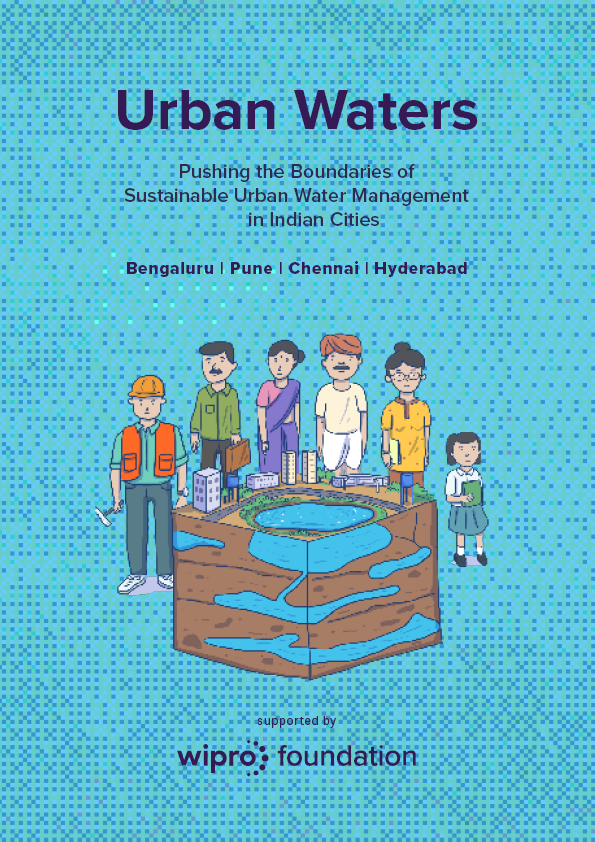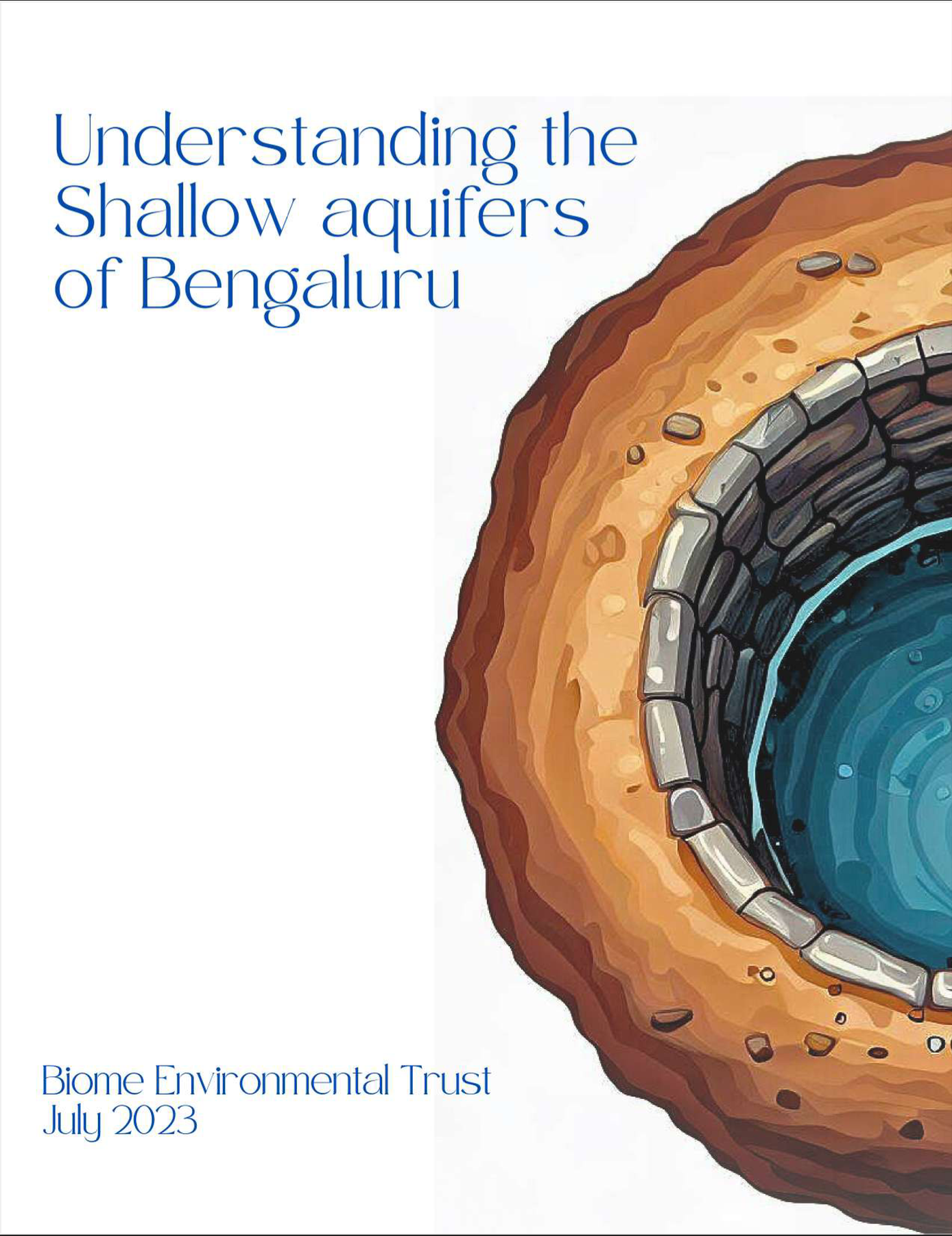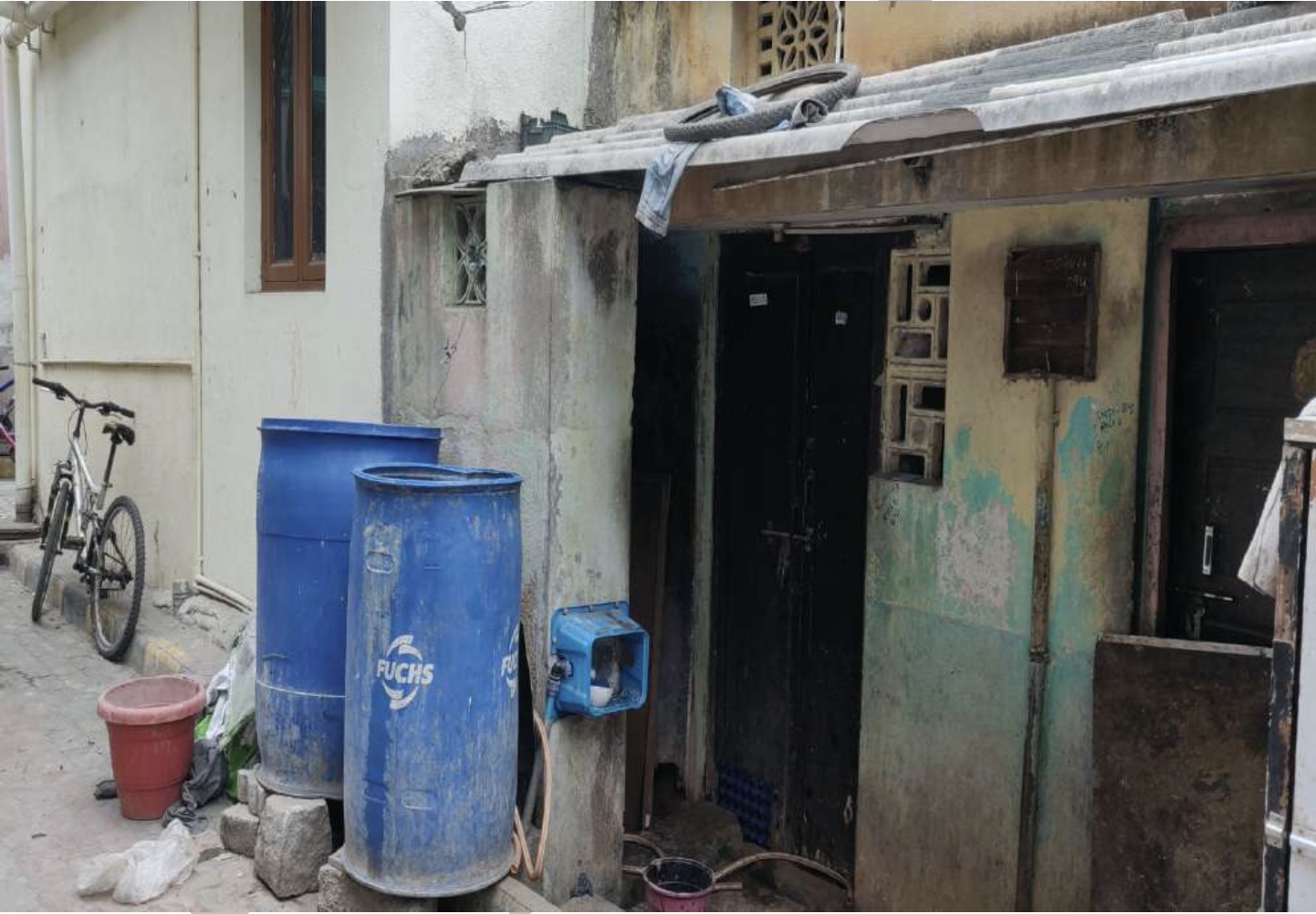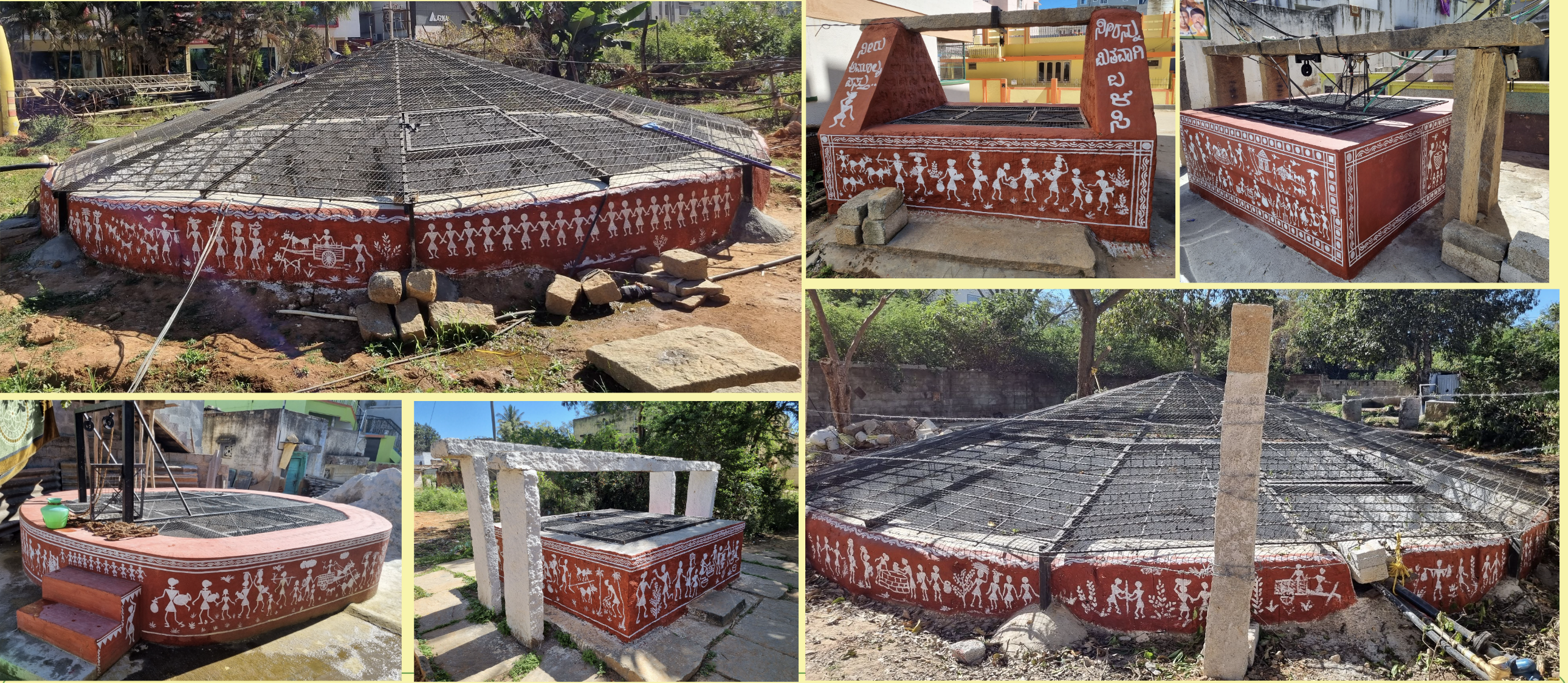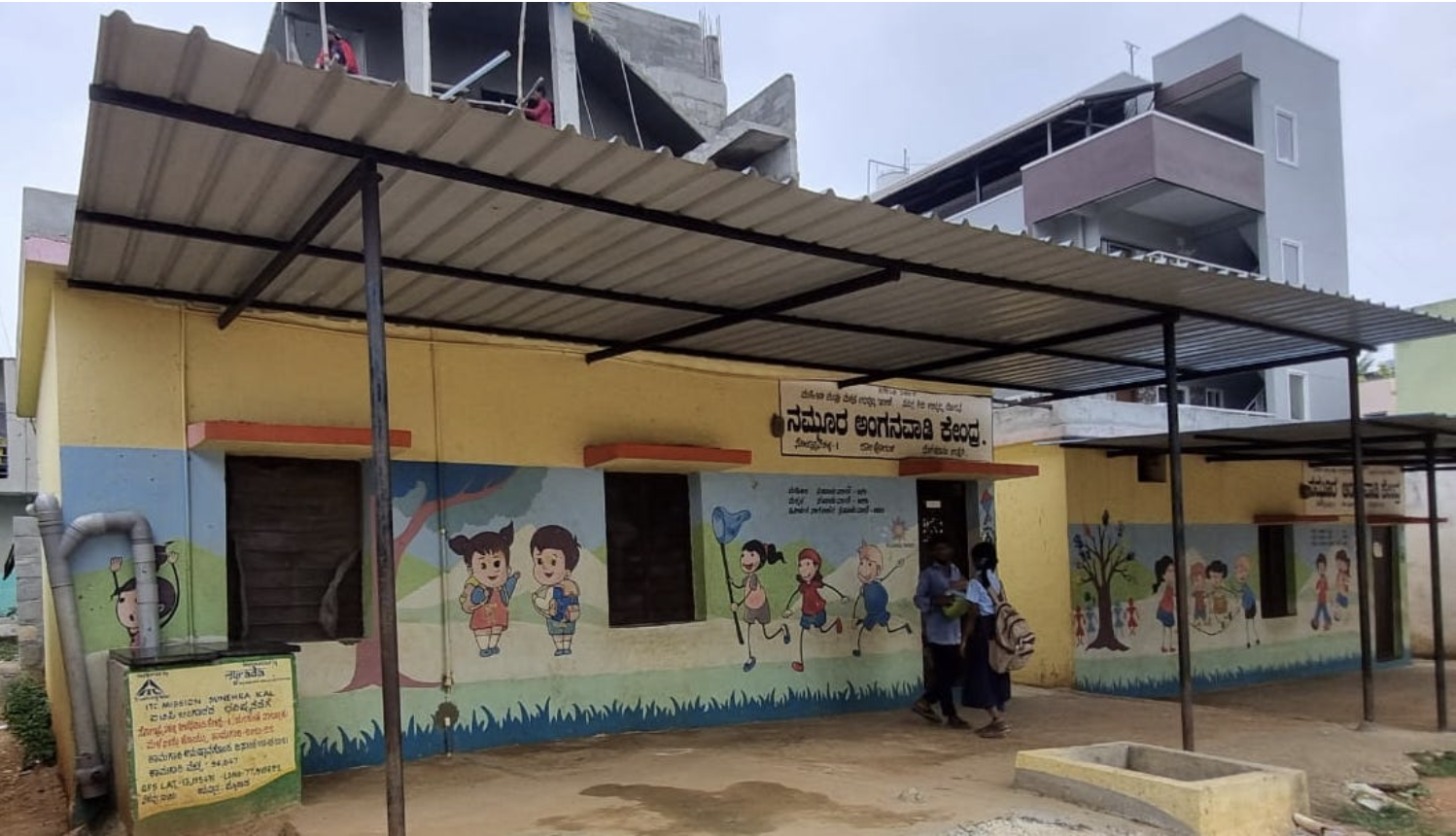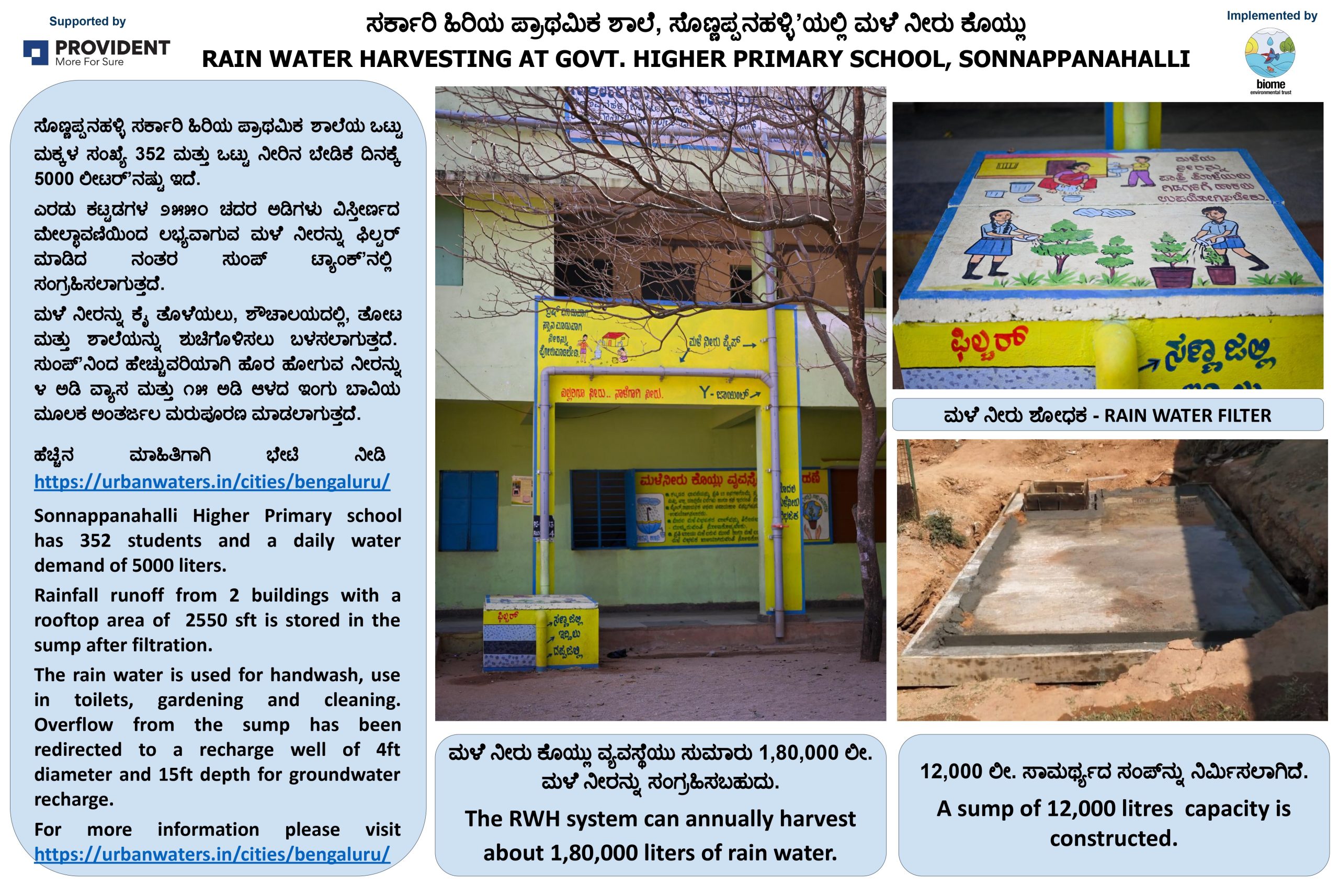Borewells
The borewell is now perhaps the most common source of water in urban India. These are wells dug deep into the ground to tap into water-bearing soil or rock layers termed aquifers. Borewells typically draw water from “confined deep aquifers”, i.e., rock layers deep underground, where water is trapped under pressure between the cracks of rocks. These aquifers are formed over many years, sometimes even centuries, due to water percolating down the rock layers.
We did not always draw water from so deep underground, using borewells. In fact, until a few decades ago, open wells were fairly common even in urban areas, and were the main water sources. It was only in 1970 that borewell technology arrived in India, when UNICEF brought borewell rigs to help deal with water shortage. India’s first borewell rig, brought by UNICEF, is still preserved in Pune.
By late 1970s, borewells started replacing open wells. They became popular in cities because of the perception that borewell water was cleaner and would be available even during summers. But what borewells did was spur a culture of exploiting water. When we used open wells, we could see groundwater in the well, understand its quantity and quality, and know how best to regulate our water use. Open wells communicated to us. But with borewells, groundwater became invisible. Water was continuously extracted without any knowledge or concern about whether the aquifer would dry up. Once a borewell dried up, new borewells were dug at greater depths, and water extracted again. Now, in cities, heavy machinery is used to dig borewells up to depth of 1800 feet. As the depth increases, the risk of chemical contamination also increases.
India now has around 33 million borewells, making us the largest user of groundwater in the world. Unlike open wells, borewells do not get replenished quickly. Once dry or depleting, it takes very long for a deep confined aquifer to get recharged. Open wells are replenished more easily as the shallow aquifers they tap into, fill up quickly during rains.

What happens when you dig a borewell?
Rock layers at great depths are usually less permeable, and cannot soak up water. Thus water stays trapped in cracks, surrounded by rocks under pressure. When a borewell is dug, such water-bearing cracks are struck are various depths, and water juts out at high pressure into the borehole. This causes a sudden rise in water level in the borehole. The level gets stabilised over time; this stable level is called the static water level of the borewell. As the depth increases, the rock becomes even less permeable and the number of cracks decrease reducing the chance of finding water.
Borewells usually have casings, to prevent the borehole from collapsing. The casing pipe is made of galvanised iron or PVC, and part of it would be visible above the ground. It is installed till the depth at which hard rock layer starts, and is usually 4, 6, 12 or 24 inches in diameter. Diameter of the casing pipe would be half inch lesser than that of the borewell.
A “submersible pump” of appropriate power rating is inserted into the borehole, typically below the lowest crack from which water has jutted out into the borehole. This pump has a “delivery pipe” attached which comes up all the way up to the surface. The pump delivers the water from this pipe, which is collected by the borewell users.
Borewell water usually has less microbial contamination than open well water as its water has trickled down through more rock layers. But it is more susceptible to chemical contamination for the same reason. While trickling down, the water comes in contact with naturally-occurring salts like fluorides and arsenic. Water percolates down mainly during rain, but also from other sources like lakes – a process termed recharge. This is why borewell water has to be tested regularly to ensure that it is not contaminated.
Regulating borewell use
The Central Ground Water Board (CGWB) has categorised many parts of India as having overexploited their groundwater resources, because of high numbers of borewells in use. Wells in these areas are supposed to be registered and regulated. Bengaluru too falls in the ‘overexploited’ category. As of 2011, over half of the city’s water demand was being met by borewells, as per the ‘Excreta Matters’ survey by CSE (Centre for Science and Environment). Borewells contributed to 585 MLD, out of the city’s total water demand of 1125 MLD.
As water demand continues to shoot up, reliance on borewells is only going to increase. BWSSB (Bengaluru Water Supply and Sewerage Board) estimates that the city’s water demand will be 2100 MLD by the year 2021. But it currently has the capacity to supply only 1310 MLD, not considering leakage loss of about 40%.


The deepest known borewells in Bengaluru now are at depths of over 1700 feet. Shallower ones exist at 100 feet. In Bengaluru’s geology, deep aquifers start in most places at depth of about 100 feet, in the hard rock layer. Here’s a link to a series of presentations that explains everything about Bengaluru’s borewells.
Given the rate at which groundwater is depleting, we should limit our borewell use only to emergencies like droughts. We need to create communities of borewell users to share information and better understand the aquifers we rely on. Instead of digging more borewells, and often without good results, we should revive and recharge our open wells to fill up our shallow aquifers.
Further reading:



